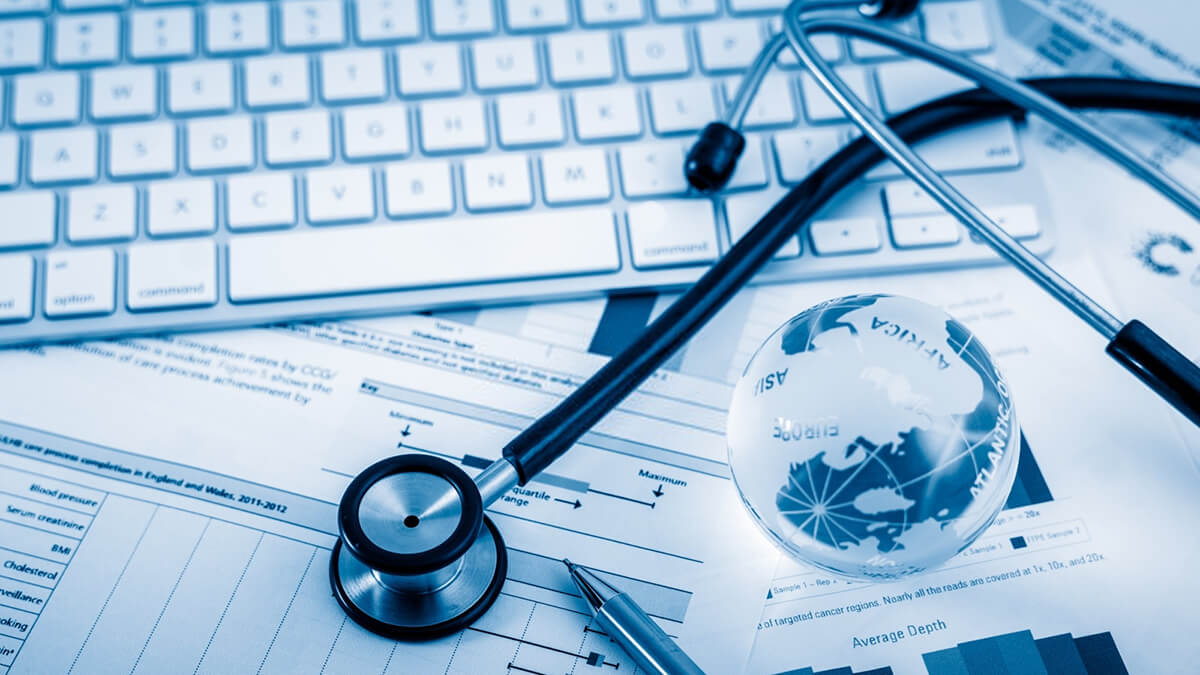Medical Administration Careers: Checking Out Job Opportunities and Salaries
Medical Administration Careers: Checking Out Job Opportunities and Salaries
Blog Article
Best Practices in Medical Administration for Improving Efficiency and Decreasing Costs
In the ever-evolving landscape of medical care, the pursuit of best practices in clinical administration is extremely important for improving efficiency and curbing costs. By incorporating advanced technologies such as electronic health and wellness documents and telemedicine, healthcare suppliers can improve procedures and improve client care. Nonetheless, technology alone is not a cure all; enhancing resource allocation and fostering collaborative communication among treatment groups are equally important (medical administration). As companies strive to balance top quality and price, what methods should be focused on to accomplish these double objectives? The answers to these concerns hold the secret to an extra lasting medical care system.
Leveraging Advanced Technology
In today's quickly evolving healthcare landscape, leveraging innovative innovation is no much longer optional yet essential for effective medical management. The assimilation of electronic remedies right into medical care systems has actually changed the method facilities run, simplifying processes and boosting patient care. Electronic Health And Wellness Records (EHRs) are crucial, giving detailed patient data that can be accessed immediately by accredited employees, therefore minimizing redundancy and minimizing errors. By streamlining individual info, EHRs get rid of the need for difficult paperwork and help with seamless communication amongst healthcare carriers.
Telemedicine is another technical advancement that has actually reinvented individual communication. It provides benefit for both individuals and health care professionals by allowing remote examinations, which can reduce the demand for in-person sees and maximize consultation organizing. Additionally, telehealth platforms can expand medical care accessibility to rural or underserved locations, linking spaces in treatment delivery.
Moreover, using Expert system (AI) and artificial intelligence is becoming progressively common in predictive analytics, permitting early detection of potential health problems and more educated decision-making. These modern technologies, when incorporated efficiently, can enhance analysis accuracy and customize individual therapy plans, eventually bring about boosted medical care end results and operational effectiveness.
Optimizing Source Allocation
By strategically managing sources such as employees, devices, and finances, medical care facilities can dramatically enhance their operational efficiency, boost individual end results, and decrease unnecessary expenditures. The initial action in maximizing source allowance involves performing a detailed assessment of existing possessions and determining locations where sources might be underutilized or exhausted.
Focusing on resource appropriation based on person needs and solution demands is crucial. This includes lining up resources with high-demand locations, such as emergency care or specialized therapies, to ensure prompt and effective client care. Carrying out flexible staffing designs can likewise optimize labor sources by readjusting workers allotment in reaction to changing individual quantities. Additionally, welcoming telemedicine and various other technological services can reduce physical resource restrictions by offering different avenues for patient-provider communications.
Funds need to be thoroughly monitored and alloted with tactical insight to support both temporary functional needs and long-lasting institutional objectives. This includes investing in training programs that enhance staff proficiencies and adopting energy-efficient practices that lower operational costs (medical administration). Eventually, an optimized source appropriation approach fosters a lasting medical care atmosphere that is responsive, efficient, and economically prudent
Streamlining Workflow Processes
When health care centers purpose to boost operational performance, improving workflow processes becomes an essential emphasis. Effective process lessen redundancy, get rid of unnecessary actions, and boost coordination among medical care specialists. This strategy not only speeds up service delivery but likewise enhances the high quality of person care.

Next, technology assimilation plays a significant role in streamlining operations. Executing electronic wellness documents (EHRs) and digital doctor order access (CPOE) systems decreases documents, reduces human error, and makes sure details comes to all appropriate workers. Furthermore, leveraging telemedicine platforms can enhance person assessments and follow-ups, minimizing the pressure on physical facilities.

Ultimately, structured operations cause set you back decreases and boosted individual fulfillment, fostering a more sustainable healthcare setting.
Enhancing Data Monitoring
Structure upon streamlined workflows, optimizing information management ends up being an essential element beforehand health care administration. Efficient information management systems are vital for keeping accurate patient records, improving decision-making, and ensuring conformity with regulatory standards. By applying robust information monitoring services, healthcare centers can improve the top quality of patient treatment while simultaneously decreasing functional costs.
One secret facet of improving data administration is the integration of advanced digital health document (EHR) systems. These systems help with the seamless exchange of useful content patient details across different departments, reducing replication of examinations and reducing mistakes. A properly designed EHR system sustains data analytics, allowing doctor to determine fads and make notified choices relating to individual care.
Additionally, protecting patient data is critical. Taking on extensive cybersecurity steps, including file encryption and normal audits, i loved this ensures the stability and discretion of delicate details. This not just shields individuals however likewise maintains the institution's credibility.
Purchasing personnel training is another essential factor. Informing healthcare experts on information administration methods enhances their ability to successfully make use of technology, causing boosted person end results. In verdict, enhancing information administration via sophisticated modern technology and thorough training is important for achieving efficiency and price decrease in medical administration.
Fostering Collaborative Interaction
An essential element beforehand clinical administration is promoting joint communication amongst health care professionals. Effective interaction is vital for making sure smooth client treatment, optimizing therapy results, and reducing errors. By motivating open dialogue and sychronisation across multidisciplinary groups, health care companies can enhance their functional performance and reduce unneeded prices.
Central to this approach is the integration of communication innovations such as electronic wellness documents (EHRs) and safe messaging platforms, which assist in the fast exchange of crucial person details. These tools enable healthcare carriers to accessibility and share data in real time, guaranteeing that all group participants are educated and aligned in their decision-making processes. Routine group meetings and interdisciplinary rounds can better advertise a culture of collaboration and responsibility.
Educating programs concentrated on improving interaction skills are likewise important. These programs can help personnel develop the ability to share details clearly and pay attention actively, thus reducing misunderstandings and fostering an encouraging workplace. Additionally, embracing standardized communication procedures, such as SBAR (Scenario, History, Analysis, Referral), can enhance the exchange of information, ensuring that vital details are communicated succinctly and effectively. Eventually, promoting collective communication leads to boosted health care distribution check this and price savings (medical administration).

Final Thought
Including advanced technology, such as electronic health records and telemedicine, along with maximized source appropriation and structured process procedures, is vital for enhancing efficiency in medical management. Reliable information administration and fostering collaborative interaction amongst health care teams are important for reducing redundancies and enhancing treatment high quality. By prioritizing precautionary treatment and participating in quality improvement campaigns, medical care organizations can achieve substantial price savings and improved person end results, thereby ensuring lasting health care shipment in an increasingly complex setting.
Report this page